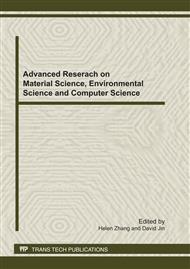p.129
p.134
p.139
p.144
p.148
p.152
p.156
p.160
p.164
Application of 3-D Fluorescence Spectrum and PARAFAC Method in Petroleum Pollutant Measurement and Identification
Abstract:
The paper used the CCl4 solutions of three kinds of petroleum as experimental subject, and a series of 3-dimentional fluorescence spectra were obtained by a fluorescence spectrometer. 3-D fluorescence data of different samples consisted three-way data arrays. The paper overlooked the specific components of petroleum pollutant, and each kind of petroleum was regarded as a whole, then PARAFAC method could obtain satisfactory spectrum decomposition result, and the concentration predictions of predicted set are shown in paper. When interfering substance exists, the method is effective similarly.
Info:
Periodical:
Pages:
148-151
Citation:
Online since:
August 2011
Authors:
Price:
Сopyright:
© 2011 Trans Tech Publications Ltd. All Rights Reserved
Share:
Citation:


